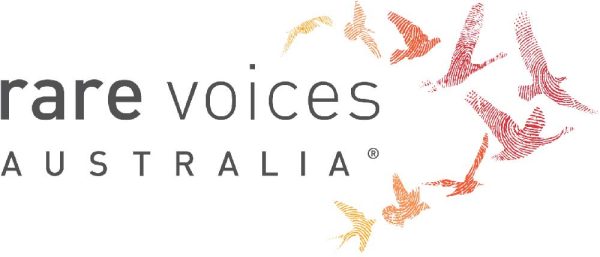Fibromuscular dysplasia (FMD)
Quick Search
- Summary
- Synonyms and Classifications
- Symptoms
- Disability Impacts
- Cause and Inheritance
- Diagnosis
- Treatment
- Clinical Care Team
- Clinical Care Guidelines
- Emergency Management
- Research
- Rare Disease Organisation(s)
- Lived Experience
- Support Services and Resources
- Mental Health
- Other Information
- Useful Links for Healthcare Professionals
Summary
Fibromuscular dysplasia (FMD) is a condition in which there is abnormal cell growth in the walls of one or more arteries (blood vessels that carries oxygen-rich blood from the heart to other parts of the body).1,2 This can result in the narrowing of arteries resulting in decreased blood flow (stenosis), enlargement of arteries (aortic aneurysm), tearing of the artery wall (dissections) and twisted or curved arteries (arterial tortuosity).2 FMD is a non-atherosclerotic arterial disease as it is not caused by the build-up of cholesterol plaques.2
FMD may present as focal FMD (in which the lesions may be in a part of the artery), or multifocal FMD (in which the lesions appear like a “string of beads”), which can be detected using an angiogram.2 It can affect almost all arteries, but the arteries that are most commonly affected are those that supply the kidney with blood (renal arteries) and those in the neck that supply the brain with blood (specifically the carotid and vertebral arteries).1-3 In some cases, arteries in the abdomen (supplying blood to the liver, spleen and intestines) as well as in the extremities (legs and arms) and coronary arteries (to the heart) may be affected.1,2 People with FMD often have more than one type of artery affected (multivessel FMD).
Symptoms of FMD can vary depending on the type of artery that is affected, and how it is affected.1,3 It can range from mild or no symptoms, to severe complications such as stroke and bleeding into or near the brain.1-3 FMD has been mainly diagnosed in women (particularly those middle-aged) but can also affect men and children.1
Synonyms and Classifications
There are no known synonyms.
Universal rare disease classifications provide a common language for recording, reporting and monitoring diseases. Please visit the Rare Disease Classifications page for more information about these internationally recognised classifications.
There is no ORPHAcode.
Symptoms
Symptoms of FMD can vary between individuals and depend on the type of artery that is affected, and how the artery is affected.1,3
Common symptoms include, but are not limited to, high blood pressure, kidney abnormalities, severe migraine headaches, ‘swooshing’ sounds in the ears timed to heartbeat (pulsatile tinnitus), dizziness, mini-strokes (transient ischemic attack) and strokes.2
There may also be pregnancy-related complications in individuals with FMD.4
Please speak to your medical team to learn more about the symptoms and complications of FMD.
Disability Impacts
Rare diseases are often serious and progressive, exhibiting a high degree of symptom complexity, leading to significant disability. Majority of the estimated two million Australians living with a rare disease meet the Australian Government’s definition for disability (in accordance to the Australian Public Service Commission and Australian Bureau of Statistics), and many experience severe and permanent disability impacts. If you or someone you care for is experiencing disability-related impacts from a rare condition, please speak with a health or disability professional for advice. Information about relevant disability support can be found at the RARE Portal’s Disability Support Information page.
Cause and Inheritance
The exact cause of FMD is still being studied, but genetic factors that increase the risk of developing FMD have been identified.3,5 Environmental factors (including tobacco use) and female hormones have also been associated with FMD.2
Diagnosis
Diagnosis of FMD involves use of an imaging test like an angiogram to visualise the morphology (appearance) of arteries.
First International Consensus on the diagnosis and management of fibromuscular dysplasia (2019) has information about the consensus diagnosis of FMD – the presence of at least one focal or multifocal arterial lesion is required for a FMD diagnosis. The presence of enlarged arteries (aneurysm), tearing of artery wall (dissection), or twisted or curved arteries (tortuosity) is not sufficient for a FMD diagnosis. This resource also provides information on differential diagnosis which is used to determine if the symptoms can be caused by other conditions.
Treatment
There is currently no curative treatment for FMD. Treatment is targeted at managing symptoms (symptomatic management) and involves a multidisciplinary care team. This may involve antiplatelet therapy (such as use of aspirin), medication to treat hypertension and migraines, and specific treatment of aneurysm and arterial dissection.2
Close monitoring and intensive follow-up may be required during pregnancy.2,4 There may also be some lifestyle considerations that can assist in the management of FMD.2
First International Consensus on the diagnosis and management of fibromuscular dysplasia (2019) has information about the consensus management and care of FMD.
Please speak to your medical team to learn more about the possible treatment or management options for your condition. Treatment will depend on an individual’s specific condition and symptoms. It is also important to stay connected to your medical team so that you can be made aware of any upcoming clinical trial opportunities.
Clinical Care Team
Clinical care for rare diseases often involves a multidisciplinary team of medical, care and support professionals. Please note that the information provided here is as a guide and that RVA does not necessarily monitor or endorse specific clinics or health experts.
Healthcare professionals involved in the treatment of FMD may include general practitioners (GP), cardiologists (heart specialists) and nephrologists (kidney specialists). The need for different healthcare professionals may change over a person’s lifetime and extend beyond those listed here.1,3
Clinical Care Guidelines
First International Consensus on the diagnosis and management of fibromuscular dysplasia was published in 2019 by a working committee, including representatives from Australia. It was commissioned by the working group ‘Hypertension and the Kidney’ of the European Society of Hypertension (ESH) and the Society for Vascular Medicine (SVM).
Emergency Management
Individuals living with rare diseases may have complex medical issues and disabilities, which are not always visible. It is often useful to refer to their medical history as well as personal information such as a medical card, doctor’s letter, or if available, a rare disease passport, for relevant information.
It may be important to consider the following when managing individuals living with FMD at emergency departments/services:
- individuals with FMD may be at risk of spontaneous coronary artery dissection (SCAD), which is an emergency condition that occurs when there is a sudden tear in a blood vessel in the heart and can lead to reduced blood flow to the heart and a life-threatening heart attack.2,6
- individuals with FMD may also be at risk of other types of arterial dissection such as dissection of the arteries in the neck that supply the brain (the carotid and vertebral arteries).
Research
Victor Chang Cardiac Research Institute’s Vascular Biology Laboratory in Australia conducts research into FMD in the areas of genetics and system biology.
There are specific considerations around participating in rare disease research, including clinical trials. It is important to be mindful of issues such as data privacy, research ethics, consent and differences in research regulations between Australia and other countries.
If you are interested in finding clinical trials for your condition, please visit the following websites; however, there may not be any clinical trials available:
It is best to discuss your interest in any clinical trials with your medical team to determine suitability and eligibility.
Please note that RVA does not necessarily monitor or endorse each group/organisation’s operational governance and activities.
Rare Disease Organisation(s)
We are not aware of any rare disease organisations for FMD in Australia. If you are aware of any FMD organisations in Australia, please let us know via the Contribute page.
International Organisation:
Fibromuscular Dysplasia Society of America (FMDSA) (United States of America)
Website: https://www.fmdsa.org/
Please note that RVA does not monitor or endorse each group/organisation’s operational governance and activities. When engaging with a group, please consider the information on the RARE Portal’s Finding Helpful Peer and Community Supports page.
Lived Experience
Fibromuscular dysplasia varies between individuals, and each person’s experience is unique.
Personal story shared with RVA: Kate’s Story
Please visit Victor Chang Cardiac Research Institute: Fibromuscular Dysplasia (FMD) to read personal stories of living with FMD.
If you would like to share your personal story with RVA, please visit the Rare Voices Australia: Share Your Story page. RVA will consider your story for publishing on our website and inclusion on the RARE Portal.
Support Services and Resources
For information on available government and social services that provide support for individuals with a rare disease, please visit the National and State Services pages.
Mental Health
People living with a rare disease, including families and carers, often face unique challenges such as diagnostic delays, misdiagnoses, limited treatment options, and limited access to rare disease specialists and support. These challenges may impact people’s emotional wellbeing and quality of life. Many people find it helpful to seek mental health and wellbeing support to cope with ongoing stress and uncertainty. Connecting with people who have shared experiences through a support group may also be helpful. Information about relevant mental health and wellbeing support can be found at:
- Mental Health and Wellbeing Support for Australians Living with a Rare Disease
- The National and State Services pages underneath the ‘Mental Health’ sections listed
Other Information
Further information on FMD can be found at:
Useful Links for Healthcare Professionals
References
-
- National Organization for Rare Disorders (NORD). Fibromuscular Dysplasia. Accessed July 31, 2023. https://rarediseases.org/rare-diseases/fibromuscular-dysplasia/
- Gornik HL, Persu A, Adlam D, Aparicio LS, Azizi M, Boulanger M et al. First International Consensus on the diagnosis and management of fibromuscular dysplasia. Vascular Medicine [Internet]. 2019; 24(2):164-189. Available from: https://doi.org/10.1177/1358863X18821816
- Victor Chang Cardiac Research Institute. Fibromuscular Dysplasia. Accessed July 31, 2023. https://www.victorchang.edu.au/heart-disease/fibromuscular-dysplasia
- Pappaccogli M, Prejbisz A, Ciurică S, Bruno RM, Aniszczuk-Hybiak A, Bracalente I et al. Pregnancy-related complications in patients with Fibromuscular Dysplasia. Hypertension [Internet]. 2020;76:545-553. Available from: https://doi.org/10.1161/HYPERTENSIONAHA.120.15349#d1e1846
- Georges A, Yang M, Berrandou T, Bakker MK, Dikilitas O, Kiando SR et al. Genetic investigation of fibromuscular dysplasia identifies risk loci and shared genetics with common cardiovascular diseases. Nat. Commun. [Internet]. 2021;12:6031. Available from: https://doi.org/10.1038/s41467-021-26174-2
- Hayes SN, Kim ESH, Saw J, Adlam D, Arslanian-Engoren C, Economy KE et al. Spontaneous Coronary Artery Dissection: Current State of the Science: A Scientific Statement. Circulation [Internet]. 2018;137:e523-557. Available from: https://doi.org/10.1161/CIR.0000000000000564
Contributors
This page has been co-developed by Rare Voices Australia (RVA)’s RARE Portal team in consultation with Professor Jason Kovacic (Cardiologist, Heart Research Scientist and Executive Director of the Victor Chang Cardiac Research Institute) and a lived experience expert.
If you are aware of any additional information that may benefit stakeholders with an interest in this page, or if you notice any broken links or inaccurate information, please let us know via the Contribute page.

